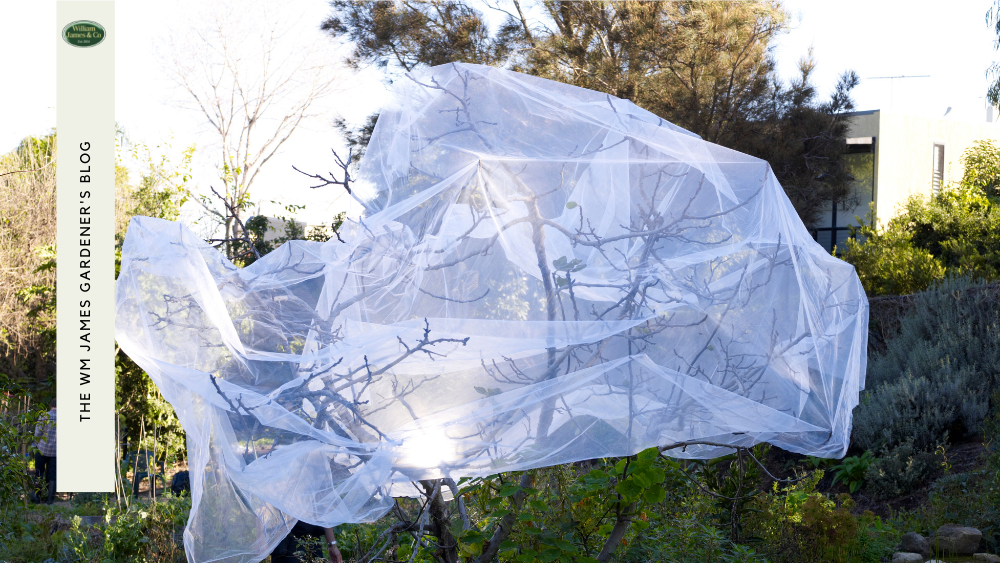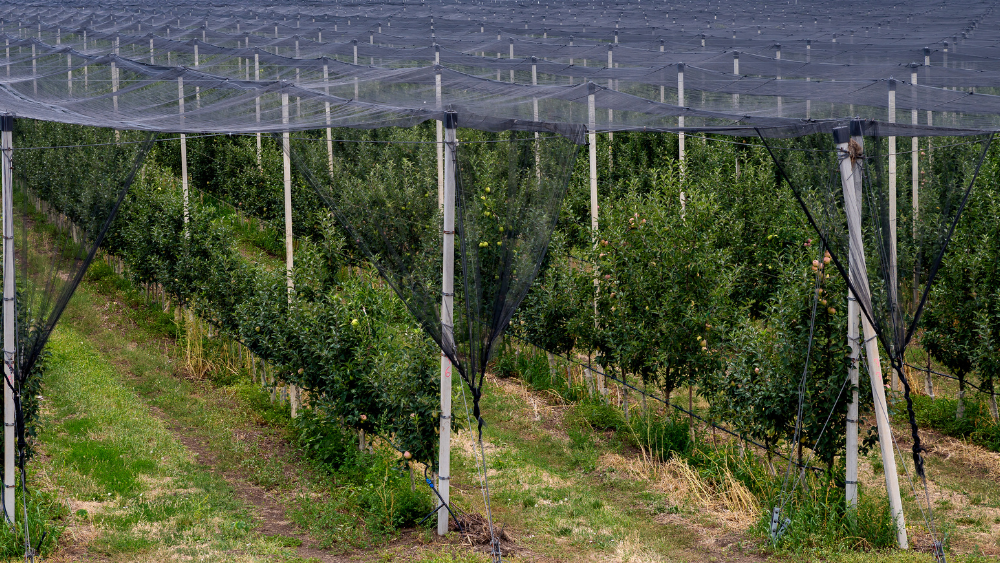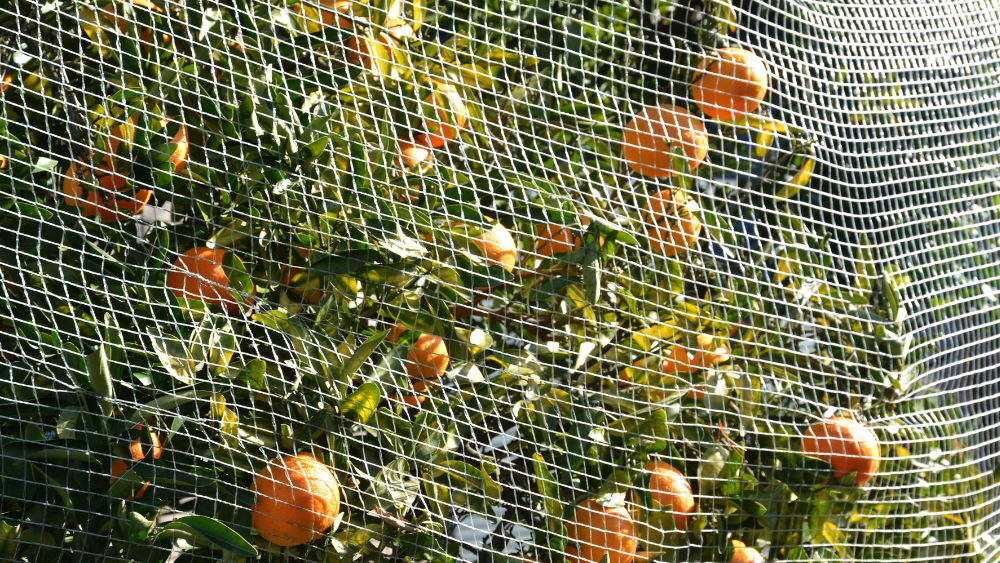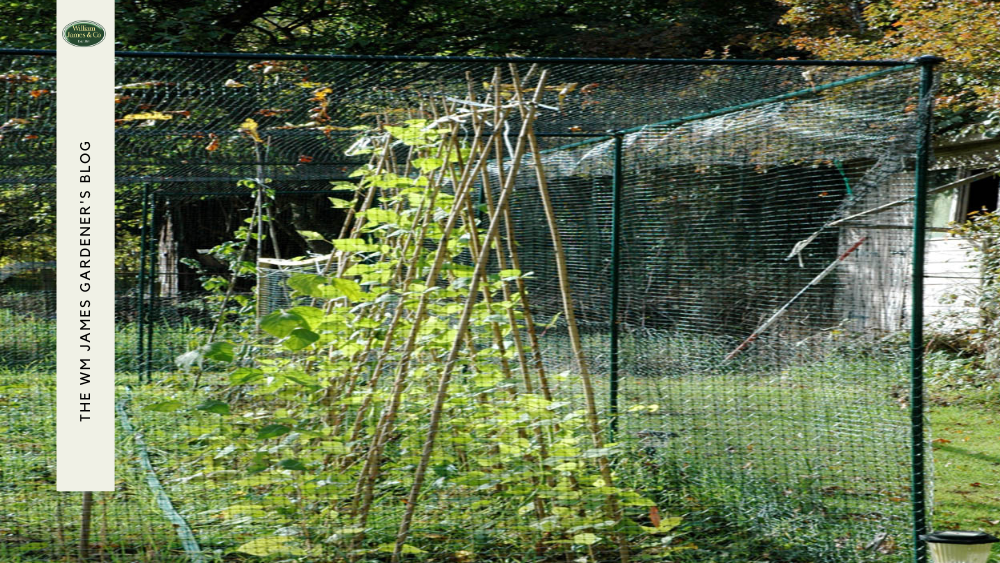We use cookies to make your experience better. To comply with the new e-Privacy directive, we need to ask for your consent to set the cookies. Learn more.
How A Fruit Net Cover Can Protect Your Garden
- Admin
- WM James Gardening Blog
- 24 Jun 2022
-
5views

A fruit net cover is an important tool for protecting fruit and vegetables in your garden.
It can help to keep pests away and protect plants from becoming damaged. There are a variety of different fruit net covers available on the market, so it is important to choose the one that is best suited for your needs.
Fruit net covers can really help to keep your garden looking great. Not only will it protect your fruit and vegetables, but it can also help to keep the area around your plants clean. This can be particularly important if you have children or pets that play in the garden.

If you are considering buying a fruit net cover, then it is important to think about the following:
Garden Size
Naturally, one of the most important things to consider when planning to add any form of structure to your garden is its size.
The size and shape of your garden area will dictate what size fruit net you’ll be able to add to certain plots, but of course, due to the way a fruit net sits over your crops, it should be able to fit in whichever plot you’ve already dug and prepared.
Where Fruit Covers Will Be Used
Not all of your plants will necessarily need a fruit cover of some kind. However, there are plenty of pests out there that can damage most plants and crops.
You’ll want to spend time identifying any potential pests in your area and make an executive decision as to which plants are at a high risk of being preyed upon.
The Type Of Fruit, Veg And Plant Protection Required
There are many different forms of plant protection that you can afford for your plants and crops, and it’s imperative that you find the right ones for each. Some might not require a net and can simply get by occasionally checking them for pests.
Of course, it isn’t just pests you need to protect your plants from. Keeping them safe from the cold using garden fleece is another important step example. This is especially important for non-native trees and plants.
Amount of Fruit Covers You Will Need
This is one of those questions that just doesn’t have a generic answer for everybody. This entirely depends on how much ground you need to cover.
The best way to figure this out is to measure each crop plot to get a rough idea of how many nets you need and how big they should be. It’s highly recommended to overestimate size because the nets will need to fully cover the plot to defend against pests.
Securing Fruit Covers
You’ll want to make sure that your fruit covers are well-secured; otherwise, they won’t be doing as good a job as they could be. You can use things like garden string to ensure that your nets are fastened securely, as well as these tips:
- Secure your netting to stakes in the ground using string or cable ties
- Choose netting that is oversized for each plot to ensure full coverage
- Weigh down loose edges using heavy objects like pots and bricks
The ultimate goal of your fruit net is to reduce the risk of pests getting to your crops. If you don’t secure them properly, then your efforts will be in vain.
Fruit Cover Replacement
Nothing lasts forever, and your fruit covers will need to be replaced over time. The constant battering of these nets by the elements and the potential damage that pests can cause to the nets in an attempt to get to the plants beneath mean that regular maintenance and checks should be done.
When To Replace Fruit Covers
You can repair small holes and tears in your fruit covers, but there will come a time when you will need to replace them entirely.
This should be done once maintenance options have been exhausted. If enough damage has been done to the net and it no longer offers complete coverage to your crop plot, it’s time to replace it.
Fruit Cover Maintenance
As mentioned above, a low level of damage to the net can be repaired with a simple stitch or by sewing a new patch of netting over the hole itself.
Whether you are using bird netting or insect netting, these materials can be repaired with very minimal skill.

Common Fruit Trees That Are Prone To Damage
You can protect your trees from damage just as you can protect berry bushes and crops. Netting can be applied to a tree if pests start becoming a problem. This netting can be thrown over the leaves and branches and secured to the trunk.
Apple Trees
There are many different ways in which apple trees can be damaged, just like most other trees and plants. However, they are fairly hardy when it comes to withstanding the elements.
Your main concern is going to be fighting any potential diseases that your apple tree can contract, as well as using something like butterfly netting to reduce the risk of them laying their eggs on the leaves.
Cherry Trees
These beautiful trees are resilient to the cold weather, too. However, it can still be problematic when they are trying to grow during the spring and are hit by unexpected frost.
While it likely won’t kill the tree outright, these unexpected frosts can damage and kill off new growth and blossom. Protect these trees, especially younger ones, with a frost protector jacket. This will help to reduce the harm that the cold weather can do to them.
Pear Trees
Another tree that can struggle in the cold is the humble pear tree. These wonderful trees can provide you with some delectable fruit. However, you are going to need to put in some effort to keep them safe.
Garden fleece is important to use for these trees, but you’ll also want to protect them from pest damage. Keep an eye on your tree’s health and utilise any type of netting you might need to protect against any pests that become a threat.
Plum Trees
As with other trees, especially young plum trees, you’ll want to apply a frost protector during the colder months and those snap frosts throughout the year.
Those young trees can also be grown inside a walk-in fruit cage if they’re still growing in a pot. Once young decide to plant them in the ground, however, you’ll want to do so outside this cage so that they aren’t hindered.
Final Thoughts
Fruit nets and other useful plant and tree protection are almost essential for gardeners who care about the safety and security of their plants and trees.
You should identify all of the possible threats that your garden can be subjected to and take steps to ensure that those threats are neutralised.
FAQs
What are fruit covers made of?
There are a few different materials which fruit covers can be made from. More often than not, they will be made of 100% polyethene. This material will not rot and can resist UV damage too.
Are fruit covers recyclable?
If you get a fruit cover made from polyethene, you will be able to recycle it. This is the most widely recycled plastic and means that you can be sure that you aren’t causing unnecessary waste when replacing your nets.
When should you use fruit covers?
If you’ve noticed pests around your garden, this is the best time to start using fruit covers. However, even if you haven’t spotted any, a fruit cover will give you peace of mind in knowing that any potential pests won’t get to your crops.
Can you use fruit covers indoors?
Fruit covers are great for indoors, too, if you have noticed pests getting indoors to your seedlings and indoor plants. Of course, a fruit cage is going to need a lot more space than netting or fleece that you wrap around a fruit tree, so just be conscious of your available space.











